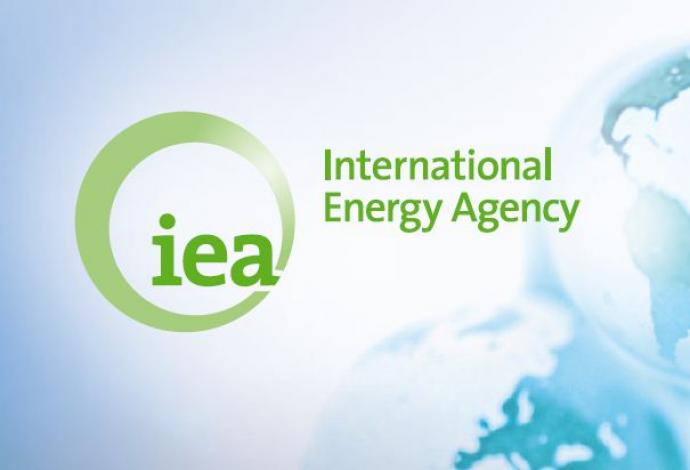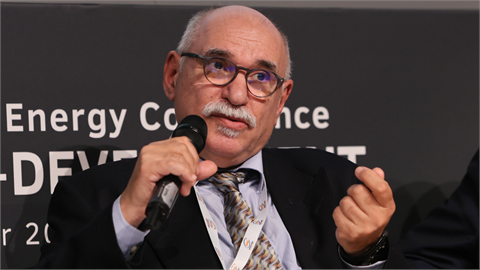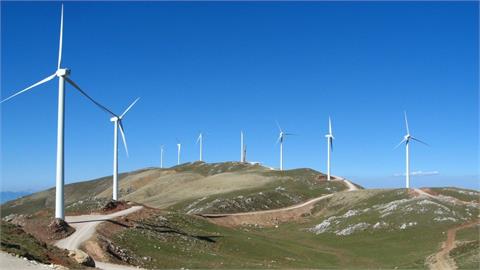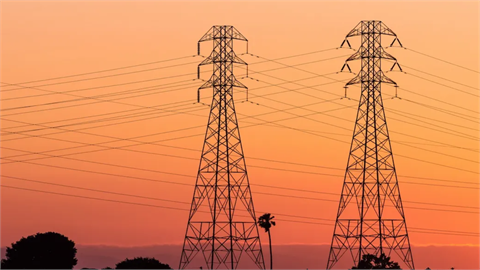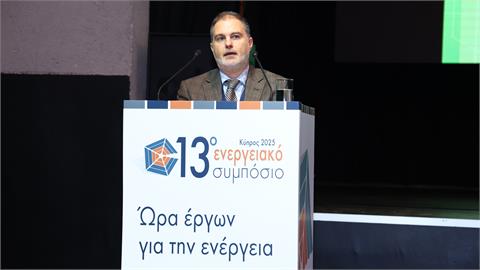Following an invitation by the International Energy Agency (IEA) the Executive Director of IENE Mr. Costis Stambolis travelled to Calgary, Canada and participated in the 2nd Unconventional Gas Forum which the Agency organized there on March 26 but also took part in the site visit which took place a day earlier
Following an invitation by the International Energy Agency (IEA) the Executive Director of IENE Mr. Costis Stambolis travelled to Calgary, Canada and participated in the 2nd Unconventional Gas Forum which the Agency organized there on March 26 but also took part in the site visit which took place a day earlier.
The Paris based IEA, which operates within the OECD structure and advises its member countries on energy policy and best practice, has over the ten years placed special emphasis in the promotion of natural gas as a key fuel which can help lessen the planet’s environmental burden and replace other more polluting fuels such as coal and oil. According to the IEA Natural gas is poised to enter a golden age, but only if a significant share of the world’s vast resources of unconventional gas can be brought to markets in a profitable as well as environmentally and socially acceptable manner. The International Energy Agency’s Governing Board in 2012 established the IEA Unconventional Gas Forum in response to strong support from stakeholders around the world towards the principles for best practices for unconventional gas development that were published in the IEA World Energy Outlook special report Golden Rules of Gas.
The objective of this year’s forum was to enable decision makers around the globe to make informed decisions on operational best practices and regulatory action to secure the economic, security and other benefits of increased unconventional gas output. The 26 March 2014 meeting of the IEA Unconventional Gas Forum , hosted by Natural Resources Canada in Calgary, focused on best practices for minimizing water use and for protecting water resources from the risk of contamination during unconventional gas production. Sound management of water resources is at the heart of the IEA’s Golden Rules. This requires robust rules on well design, construction, cementing and integrity testing to prevent leaks from the well into aquifers. It also necessitates rigorous assessment, monitoring and handling of water resources, including for produced water and waste water.
The magnitude of water use, water contamination risks, and treatment and disposal of waste water in unconventional gas developments have generated considerable public concern and emerged as a key issue during the one day Forum but was also showcased in the site visit which preceeded the Forum. Many of the water risks are shared with production of conventional resources, although the intensity of drilling required for unconventional gas may exacerbate some of them as it became clear during the Forum. Public concerns have focused on the possibility for hydrocarbons or chemicals to migrate from production zones aquifers through the intervening rock, even though there may be other issues that merit equal- or even more- attention from companies and regulators.
Furthermore, and as stated by the IEA ,the Forum aims to create a fact-based platform for stakeholders to debate what has been learned from past experiences, to identify what areas require further analysis, and to offer perspectives on possible new technological, regulatory and community approaches to address water-related risks in unconventional gas production. The Forum which was attended by more than 100 participants from 25 different countries was informal in nature and was held under the Chatman House Rules.
Present in the IEA Gas Forum was Alberta’s Ministry for Energy, the Hon. Dianna McQueen who delivered the keynote luncheon address. In her speech Ms. McQueen stressed the important role of Alberta, which is the source of 70% of Canada’s natural gas production in promoting unconventional energy development. ‘’Balancing development with responsible environmental stewardship is a way of life in Alberta’’, underlined Ms. McQueen in her opening remarks. She further said that ‘’Alberta has been drilling for natural gas since 1883, 12 years before it became a province, and fifty years before it was granted constitutional ownership of Crown resources, with the right and responsibility to regulate their development.’’ ‘’ More to the point,’’ she noted ,‘’we have been using hydraulic fracturing since the technology was developed in the 1950s, and horizontal drilling technology since the 80’s. Alberta is now home to over 178,000 wells that use fracturing technology. Since 2008, nearly 9,000 horizontal wells have been drilled in Alberta, using multi-stage hydraulic fracturing, and horizontal well drilling, for oil and gas development. Alberta is embracing its role as a leader in unconventional gas development .Our province’s natural gas and oil potential is on par with the Marcellus or Eagle Ford shale deposits in the US. In terms of unconventional gas in place, Alberta has nearly 4,000 trillion cubic feet-including almost 1,300 trillion cubic feet of shale gas , coal bed methane, and tight gas.’’
Furthermore Ms. McQueen referred to ‘’ Alberta’s total marketable gas production, including coal bed methane, which was 3.7 trillion cubic feet in 2012 and more than half of that was delivered to other Canadian provinces and the United States. But, beyond these numbers is the fact that natural gas produced in Alberta heat our homes and fuels our economy both here in Alberta and across the continent.’’
On March 25, a group of participants from the IEA Forum, including IENE’s Executive Director, had the opportunity to visit some unconventional gas prospects in the vicinity of Dawson Creek, in Northeast British Columbia, where they travelled by chartered plane, where the Montney Formation is located and where initial unconventional development took place. The Montney Formation is one of the unconventional gas resources that has attracted a very high level of interest from oil and gas producers, both domestic and foreign. The Montney is generally considered a tight gas resource, rather than shale reservoirs and the same horizontal well and multi-stage hydraulic fracturing approach is used for development. It is often referred to as a ‘’ shale gas” resourse. The Montney Formation occurs across a region of more than 130,000 square kilometers in British Columbia and Alberta, and is host to natural gas, natural gas liquids, and light oil, with proportions varying across the region. Dawson Creek is in a part of the Montney being developed for natural gas, with minor natural gas liquids.
Although small conventional gas reservoirs have been produced in the Montney since the 1950’s it was only when horizontal wells and multi-stage hydraulic began to be used that the true potential of the resource was recognized. Natural gas production has grown from less than 0.1 Bcf/d in late 2006 to 2.5 Bcf/d in early 2014. In November 2013 the National Energy Board, together with oil and gas regulators in Alberta and British Columbia, published estimates of the marketable natural gas potential for the Montney Formation. With an expected marketable resource of 449 trillion cubic feet (TCF), the Montney is one of the largest reservoirs of natural gas in the world, second only to the North field/South Pars resource.
During the site visit participants had the opportunity to visit a variety of installations such as gas producing fields, a water treatment plant and water hubs and also a site where gas exploration was taking place with fracturing techniques used to tap sealed gas reservoirs.
Following the IEA Unconventional Gas Forum the Canadian Society for Unconventional Resources organized in Calgary a one day workshop on March 27, on Unconventional Gas in Canada which was also attended by IENE’s Executive Director. The workshop opened with a keynote address by Dr. Fatih Birol , IEA’s Chief Economist who was also the driving force behind IEA’s Gas Forum. Several presentations and interventions took place by representatives of companies and organizations active in Canada’s non conventional gas development. For further information you may visit www.csur.com
